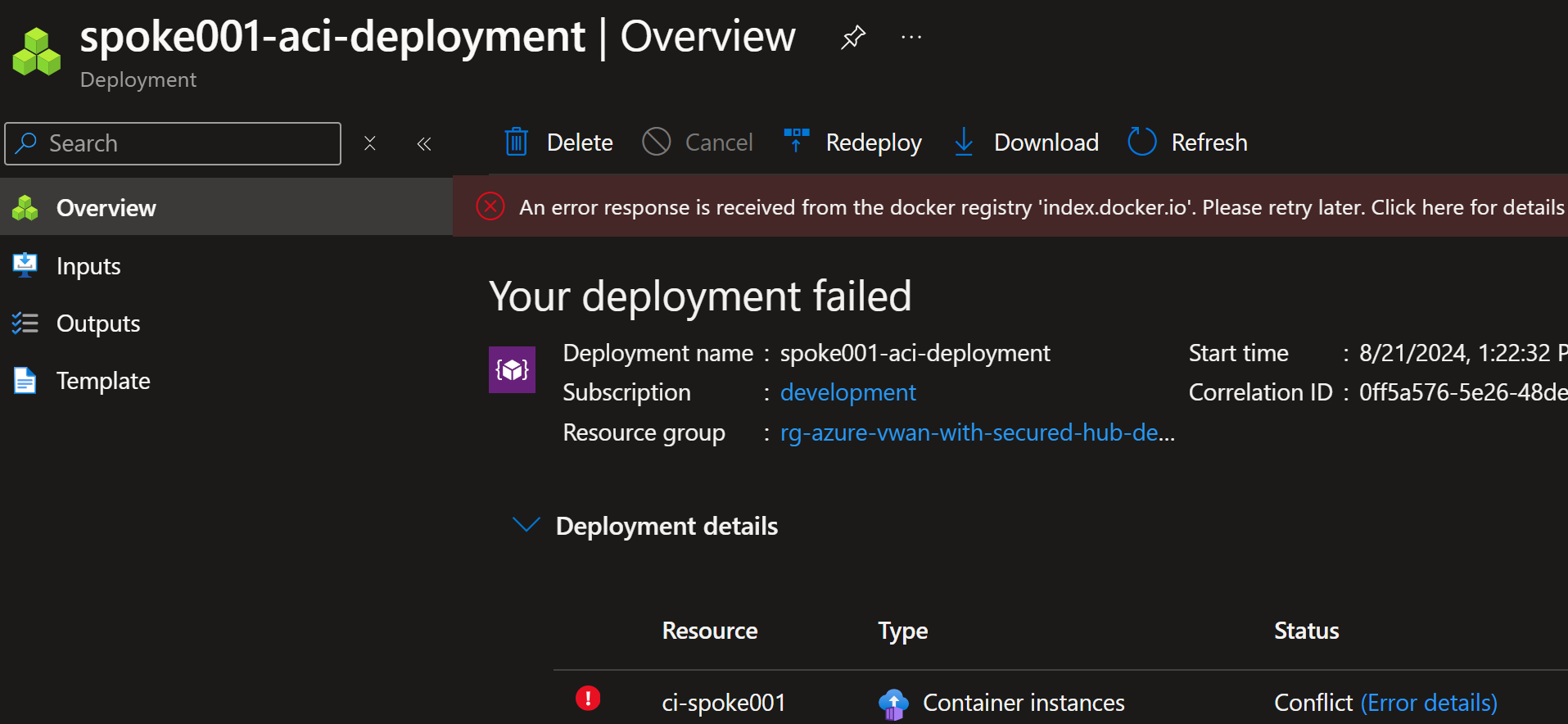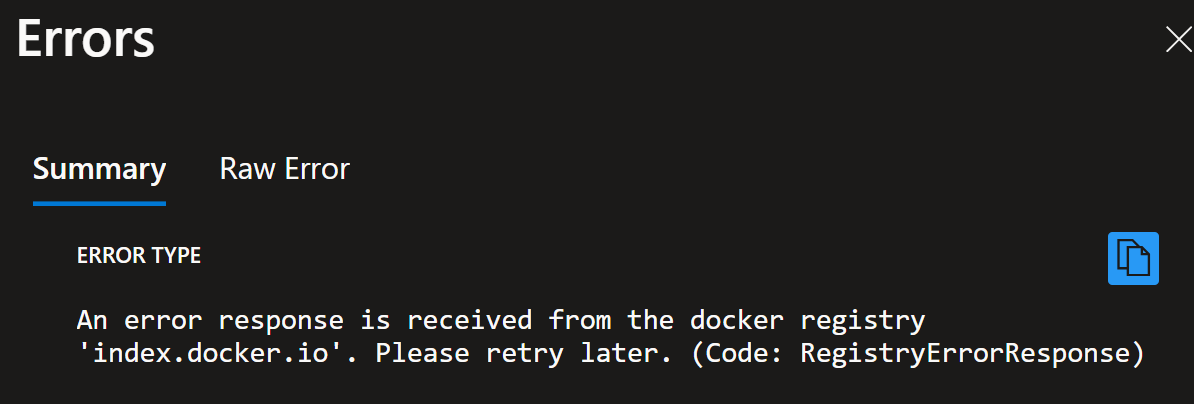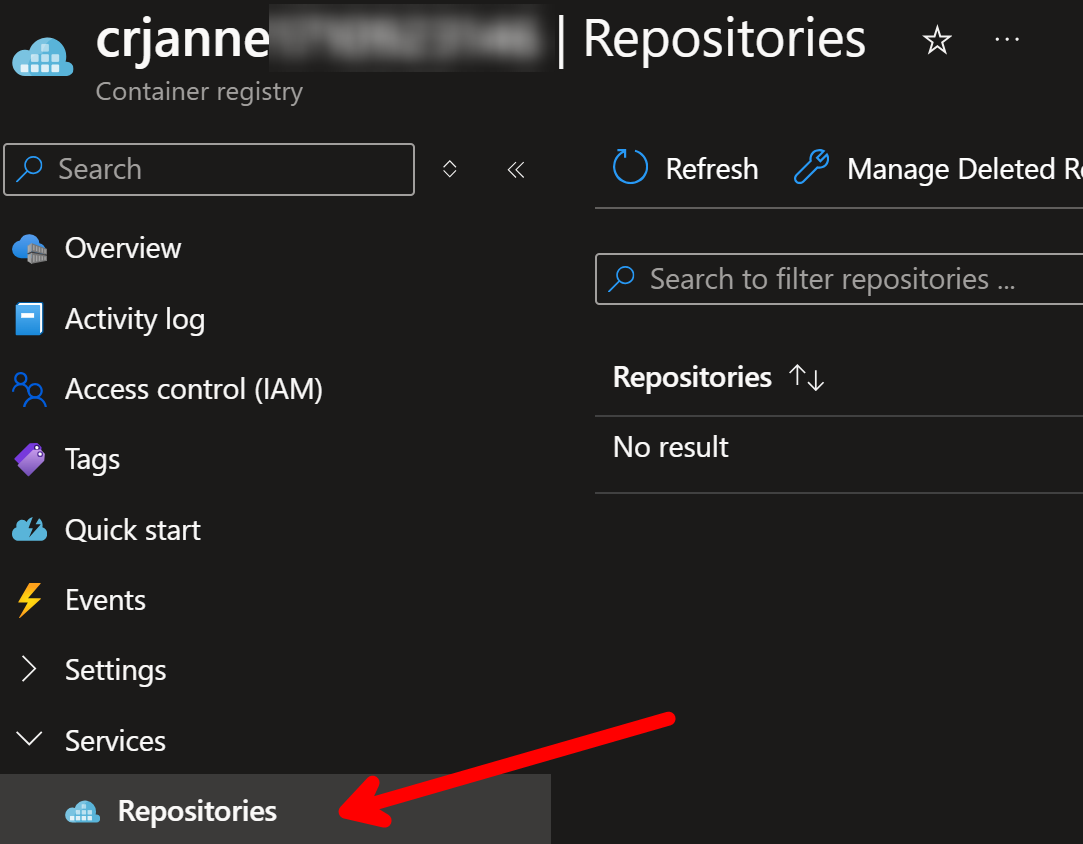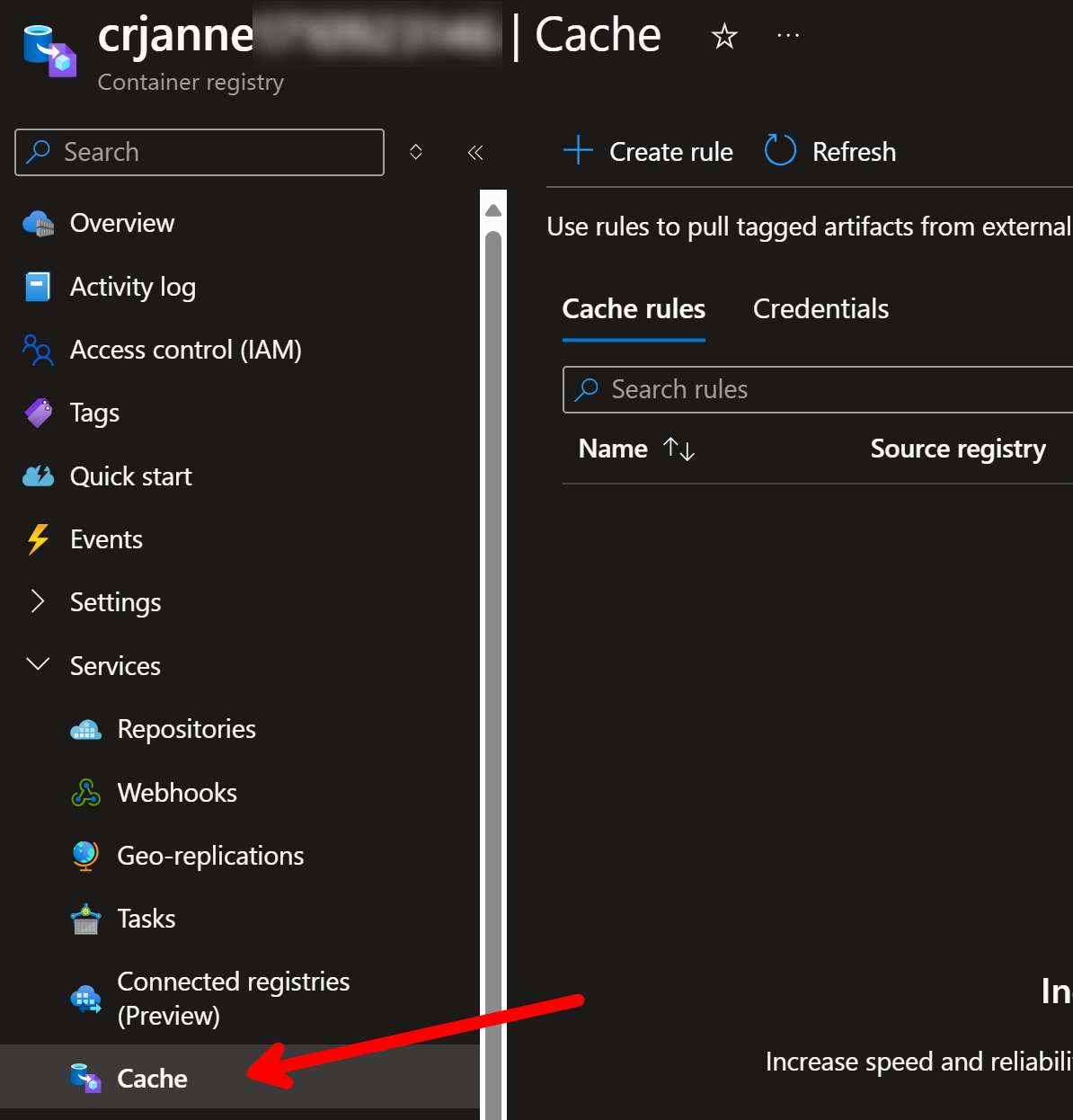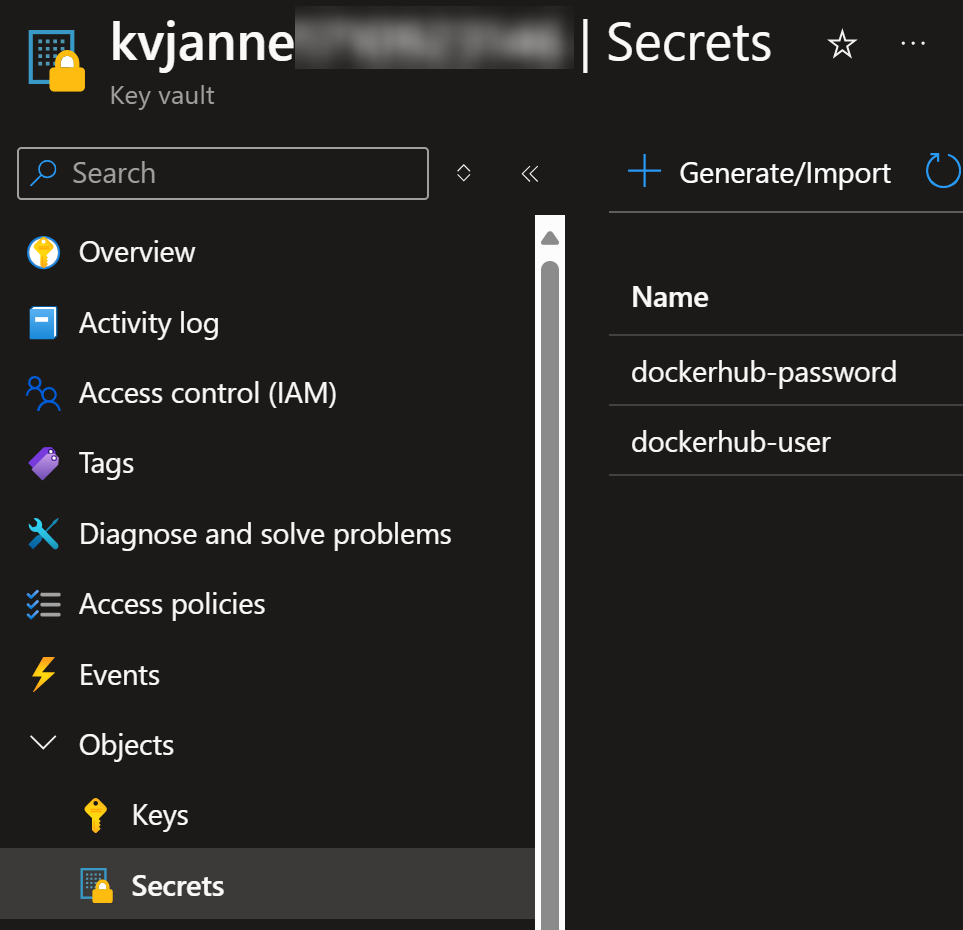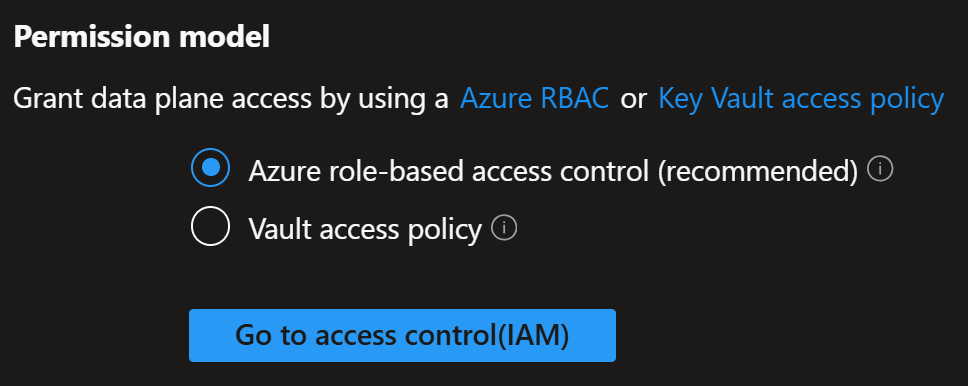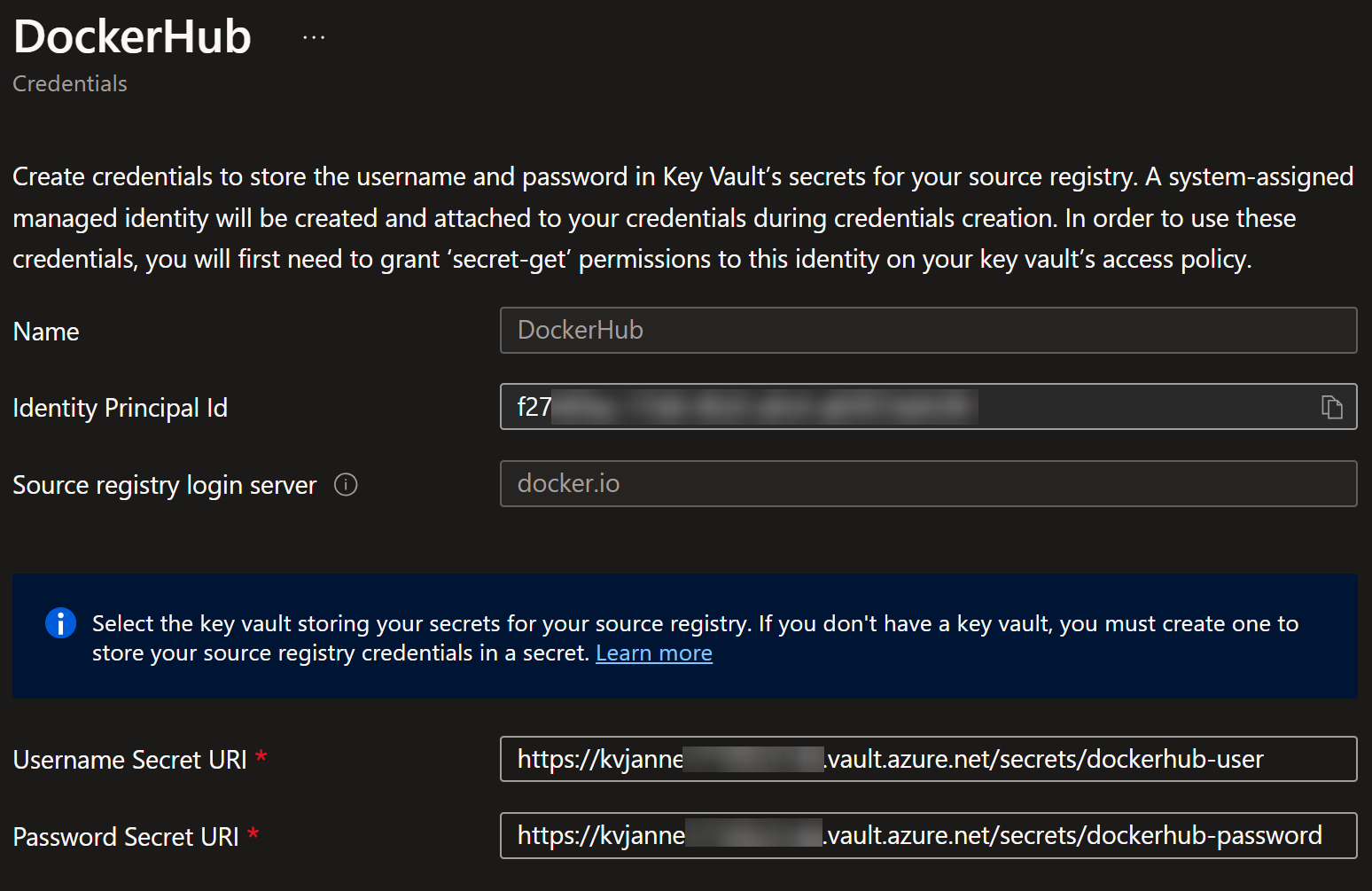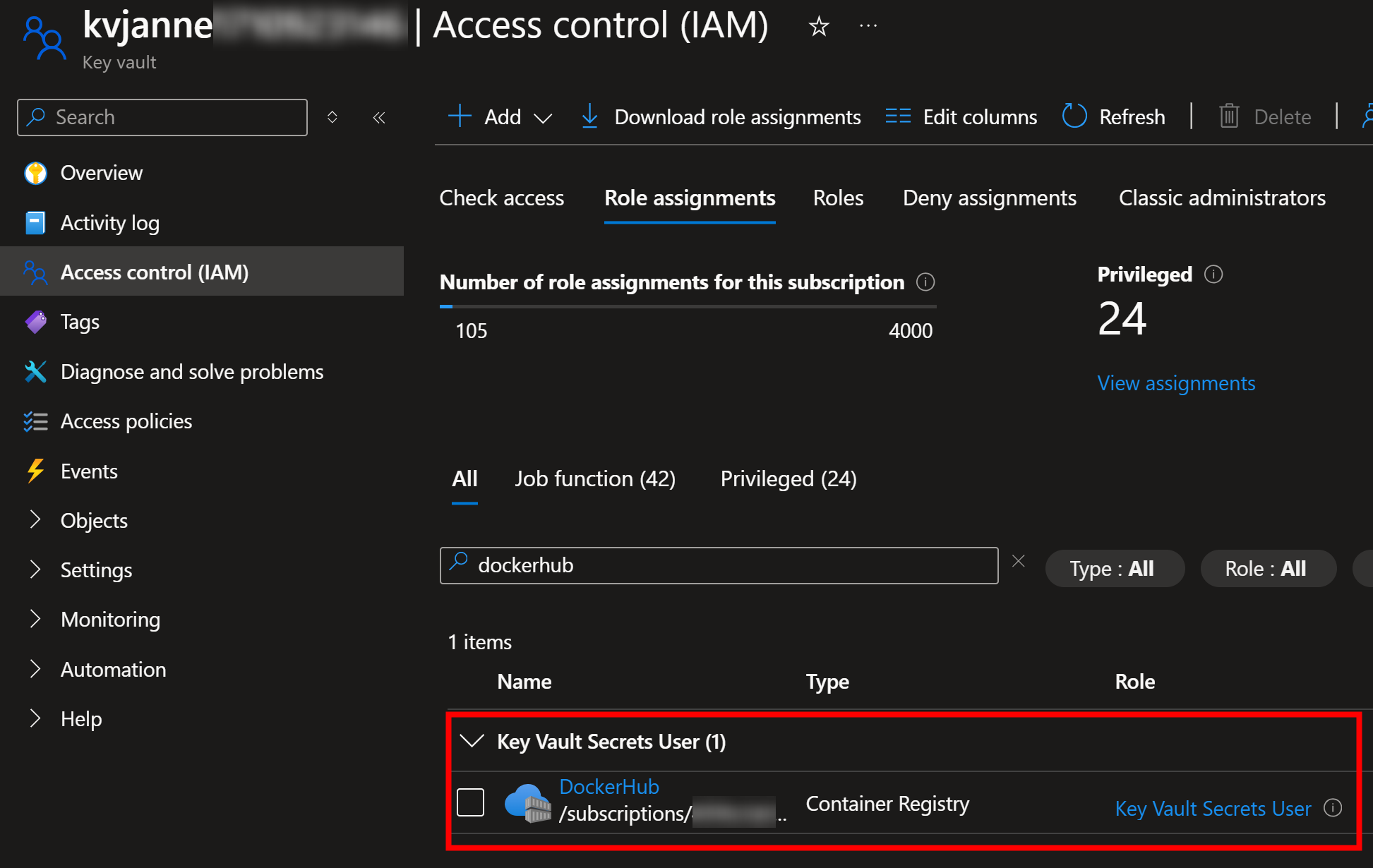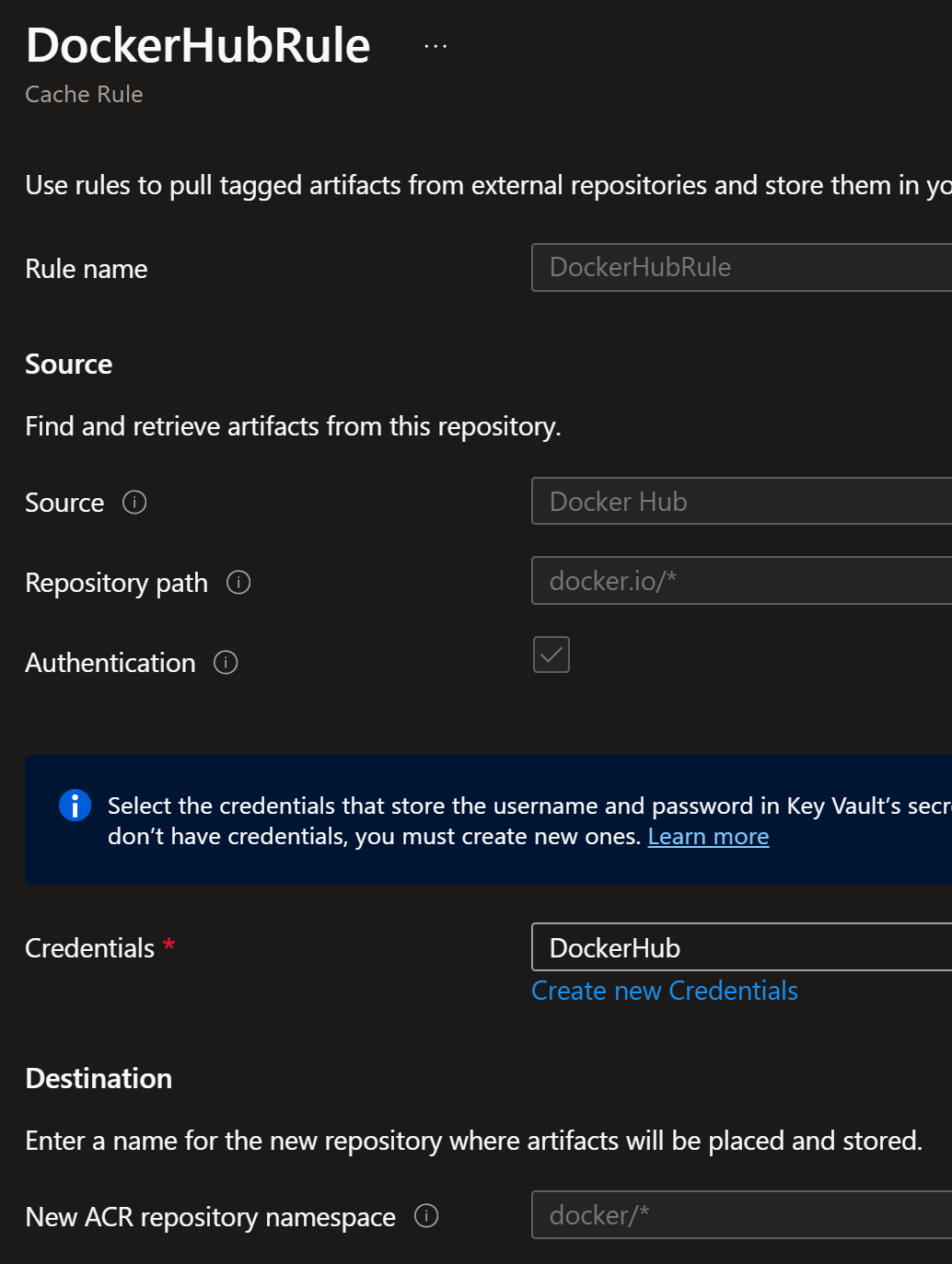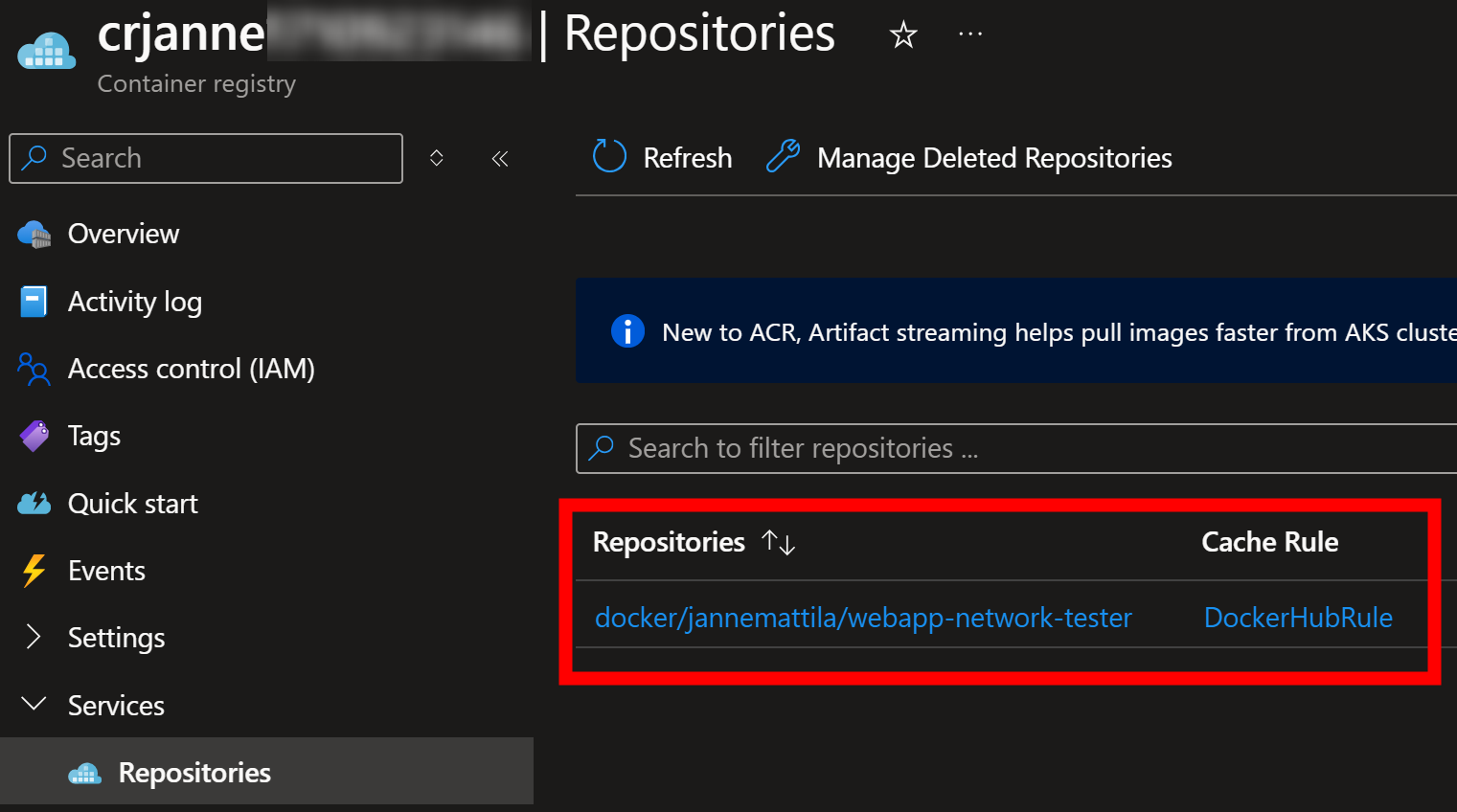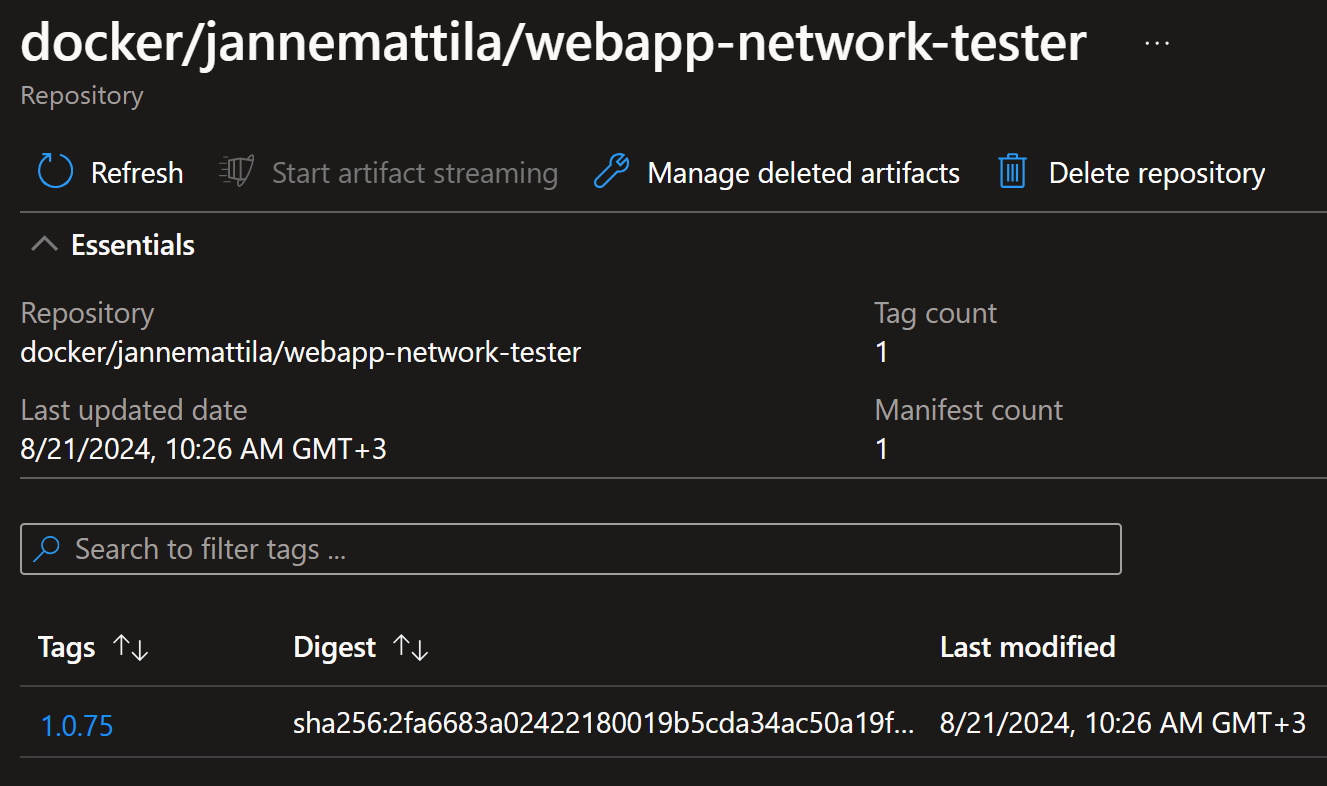"Action recommended: Begin managing public content with Artifact Cache"
Posted on: September 9, 2024If you’re working with containers in Azure, you’ve most likely received the following email:
Key point from the email is: “if you use Docker Hub, you may be affected by Docker rate limiting”. More information about the limits here: Docker Hub rate limit
So, what does this mean in practice? When you build your own images which use base images from Docker Hub or when you deploy apps using images available from Docker Hub, then you might get throttled.
Here are examples that you might see in your deployments:
More detailed error message:
{
"code": "RegistryErrorResponse",
"message": "An error response is received from the docker registry 'index.docker.io'. Please retry later."
}
Or deployment to AKS:
$ kubectl apply -f network-app/deployment.yaml
deployment.apps/network-app-deployment created
$ kubectl get pod -n network-app
NAME READY STATUS RESTARTS AGE
network-app-deployment-78c68f74bf-2bmtx 0/1 ImagePullBackOff 0 11s
$ kubectl describe pod network-app-deployment-7f8f5c4f7b-7z5zv
...
Events:
Type Reason Age From Message
---- ------ ---- ---- -------
Normal Scheduled 79s default-scheduler Successfully assigned network-app/network-app-deployment-78c68f74bf-2bmtx to aks-nodepool1-17464156-vmss000008
Normal Pulling 32s (x2 over 78s) kubelet Pulling image "jannemattila/webapp-network-tester:1.0.47"
Warning Failed 17s (x2 over 47s) kubelet Failed to pull image "jannemattila/webapp-network-tester:1.0.47": failed to pull and unpack image "docker.io/jannemattila/webapp-network-tester:1.0.47": failed to copy: httpReadSeeker: failed open: unexpected status code https://registry-1.docker.io/v2/jannemattila/webapp-network-tester/manifests/sha256:c866ebedc921ec29c7d94b11fdf6fbf4cbe65696afeb744dcc039e92fea5b4c8: 429 Too Many Requests - Server message: toomanyrequests: You have reached your pull rate limit. You may increase the limit by authenticating and upgrading: https://www.docker.com/increase-rate-limit
Warning Failed 17s (x2 over 47s) kubelet Error: ErrImagePull
Normal BackOff 6s (x2 over 46s) kubelet Back-off pulling image "jannemattila/webapp-network-tester:1.0.47"
Warning Failed 6s (x2 over 46s) kubelet Error: ImagePullBackOff
Most important detail from the above error message is:
429 Too Many Requests - Server message: toomanyrequests:
You have reached your pull rate limit.
You may increase the limit by authenticating and upgrading: https://www.docker.com/increase-rate-limit
You can overcome the above issues by importing container images to Azure Container Registry (ACR) and use them from there:
az acr import \
-n $acr_name \
-t "docker/jannemattila/webapp-network-tester" \
--source "docker.io/jannemattila/webapp-network-tester"
However, this is a manual process, and you need to do this for each image you want to use.
An easier way to overcome the above challenges is to use ACR as a cache for pulling images from Docker Hub. This feature is called Artifact cache. With Artifact cache, ACR automatically fetches the image from Docker Hub when you try to pull it from ACR and stores it in the cache. This allows you to avoid rate limiting issues and have more reliable deployments.
Let’s see how to set up the Artifact cache. Starting point for our setup is empty ACR:
We don’t have any cache rules set up either:
Before we start creating a new cache rule, we need to understand the big picture:
- We need to store Docker Hub credentials securely, therefore we need to create Key Vault
- Create two new secrets into Key Vault: Docker Hub username and password
- Create new credentials into ACR and use secrets from Key Vault.
- Credentials will automatically get new system managed identity
- You need to grant access to Key Vault for this new identity so that it can read secrets from it
- Create a new cache rule in ACR and use the configured credentials
- Cache rule will define which images are fetched from Docker Hub and stored in the cache
- Test by deploying workload using image from ACR
Let’s start by creating Key Vault and secrets:
Key Vault is using Azure RBAC as permission model:
Next, I’ll create credentials and reference the secrets from Key Vault:
Credentials creates a new system managed identity which I need to grant access to read the secrets from Key Vault:
Finally, I’ll create a new cache rule and use newly created credentials:
The above means that following thing happens:
If image is requested from ACR from path docker/* e.g., docker/jannemattila/webapp-network-tester,
then it will convert that request to docker.io/jannemattila/webapp-network-tester and fetch the image from Docker Hub
using the credentials provided earlier.
Now, I can test the setup by deploying a new workload to my AKS cluster:
apiVersion: apps/v1
kind: Deployment
metadata:
name: network-app-deployment
namespace: network-app
spec:
replicas: 1
selector:
matchLabels:
app: network-app
template:
metadata:
labels:
app: network-app
spec:
nodeSelector:
kubernetes.io/os: linux
containers:
- image: $acr_loginserver/docker/jannemattila/webapp-network-tester:1.0.75
name: network-app
ports:
- containerPort: 8080
name: http
protocol: TCP
Image of the workload is set to $acr_loginserver/docker/jannemattila/webapp-network-tester:1.0.75, so
ACR should fetch it from Docker Hub as configured in the cache rule.
After successful deployment, I can see the image in the ACR:
And I can see the cache rule is also showing green status:
Similarly, credential set is showing healthy status:
In case you have problems setting up the Artifact cache, you can find more information from the following resources: Troubleshoot guide for Artifact cache
Conclusion
Using ACR as a cache for Docker Hub images is a great way to avoid rate limiting issues and have more reliable deployments.
Docker Hub rate limits are not low, but we all know that you hit them when you least expect it. Therefore, it’s a good idea to prepare for them in advance.
Hopefully, I managed to explain the setup process clearly so you can start using the Artifact cache in your own environments.

